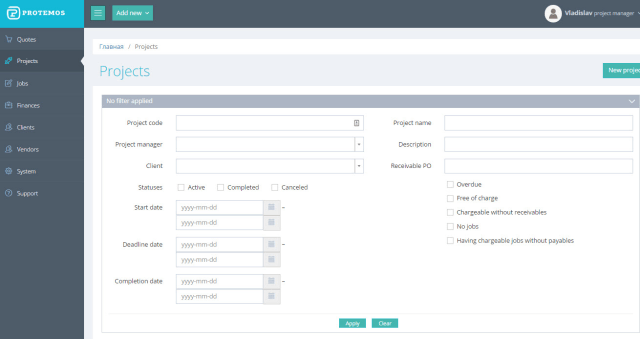Bem-vindos de volta à série de publicações convidadas! Neste mês, tenho a honra de receber um colega de trabalho, profissional incrível que muito ajudou os tradutores durante sua passagem pela Abrates como diretor e presidente e ser humano exemplar que tenho o orgulho de chamar de amigo.
Bem-vindo, William!
Vamos conversar um pouquinho sobre produtividade, qualidade de vida e organização?
Responda rápido: se você tem um trabalho pequeno que, pela sua experiência, não deve demorar mais que duas horas para ser feito, com prazo de cinco dias para a entrega, quando você começará a cuidar desse serviço?
Se você disse: “Imediatamente, mas vou parar sempre que houver uma notificação de mensagem no computador ou no celular, afinal, tem tempo de sobra para terminar e esse trabalho nem é tão grande assim, já conheço bem o assunto que esse cliente traduz, enfim, não tenho motivos para me preocupar.” Não se sinta só e leia o artigo.
Se sua resposta foi: “Na manhã do último dia do prazo, eu abro o arquivo e traduzo, não quero acostumar mal o cliente entregando muito antes do prazo. Tradução não é disque-pizza, e o cliente não vai valorizar meu trabalho se eu entregar mais rápido, vai pensar que é fácil de fazer.” Saiba que muitos tradutores e outros profissionais autônomos também pensam exatamente assim. Novamente, não se sinta só, mas leia este artigo. Leia agora.
Se respondeu que começará imediatamente e entregará ainda hoje, você faz parte de uma minoria muito disciplinada. Mas continue lendo. Tenho algumas dicas para você também.
Por que protelamos? Você sabe que tem o que fazer, sabe que tem um prazo, tem ideia de quanto tempo pode demorar para fazer, mas assume a postura do “tá tranquilo, tá tudo certo, tenho tudo sob controle”. A resposta para essa pergunta, no meu caso, foi: isso acontece porque você não tem uma rotina organizada e perde o foco com frequência.
Ter uma rotina organizada é fundamental para que você esteja no controle não só do trabalho, mas de todo o seu tempo. Eu sei, eu sei, disso você já sabia, mas o problema é colocar em prática a organização, é se habituar a ter uma agenda, uma estratégia para definir prioridades e até para decidir o que não precisa de sua atenção e deve ser deixado de lado. Porque sim, há coisas que você pode deixar de fazer, e elas não causarão nenhum impacto negativo em sua vida. Durante o período em que trabalhei na Abrates, precisei aprender a me organizar para conseguir responder às muitas demandas da associação, às necessidades inerentes de nosso trabalho, como prospectar novos clientes, manter-me atualizado e, principalmente, dar atenção aos amigos e à família que, durante esse período, ainda me presenteou com meu primeiro neto.
Não foi fácil me organizar e melhorar o foco, mas foi menos difícil do que imaginei.
Algo muito importante que você precisa saber: ninguém se torna organizado de um dia para o outro, apenas lendo sobre o assunto ou simplesmente fazendo um curso. Organização é aprendizado e construção de hábitos. É um processo lento, mas sempre passível de melhoria. A definição que mais me agrada, tirada de alguns dos muitos livros e artigos que li, é: organização é um processo de redução e seleção. Você reduz a quantidade de eventos que realmente precisam de sua atenção e seleciona quais terão sua atenção com prioridade. Há muitas ferramentas para ajudar nesse processo. Tenho algumas dicas para quem quer começar a se organizar. Dicas simples, mas muito eficientes.
A primeira é: registre em que você gasta seu tempo. Você certamente ficará surpreso ao descobrir que desperdiça boa parte de seu tempo na frente do computador com coisas que não fazem parte de sua rotina de trabalho. Você pode fazer isso com papel e caneta ou instalar algum software que registre quais os programas, sites e outras atividades realizadas no computador e por quanto tempo. Se você usa Mac, minha sugestão é o Timing. Para PC, ouvi dizer que o Toggl é uma boa opção. Instale uma dessas ferramentas em seu computador e use-o normalmente por uma semana. Provavelmente, você descobrirá que redes sociais, mensageiros e e-mails são os vilões que mais roubam tempo dos profissionais freelancers. Você pode estar pensando: mas preciso “me desligar um pouquinho” para ser mais produtivo, ter uma válvula de escape… O problema é que essa válvula precisa estar bem regulada e só deve ser aberta nos momentos certos. No meu caso, o ideal é que essa válvula esteja em outro lugar, não no computador. Uma caminhada, uma conversa com o porteiro, uma série ou desenho animado na TV. Qualquer coisa que faça você se levantar da cadeira e se movimentar pode melhorar não só sua produtividade, mas também sua saúde.
A segunda dica é sobre definição de prioridades. Uma das ferramentas mais básicas e práticas para quem quer se organizar é a Matriz de Eisenhower. Creditada ao general e ex-presidente norte-americano Dwight Eisenhower, que precisava tomar decisões rápidas durante a Segunda Guerra, ela ajuda a definir em que colocar seus esforços, o que delegar, o que agendar e o que simplesmente não fazer. Recomendo começar sua jornada de organização por ela, pela facilidade e custo zero de implementação: papel e caneta resolvem a maioria dos casos. Um vídeo bem claro sobre esta ferramenta você encontra aqui.
Outra forma de se organizar é desenvolver fluxos de trabalho. Documente em uma lista a sequência de passos que você executa para realizar trabalhos com eficiência. Mesmo para aqueles trabalhos que você já faz de olhos fechados, escrever um fluxo de trabalho pode ajudar a perceber onde você está perdendo tempo e o que poderia melhorar. Além disso, você também pode perceber a oportunidade de automatizar algo em seu processo. Não se esqueça de que o computador deve trabalhar para você, e não o contrário.
Uma dica importantíssima que ignorei por muito tempo: dormir bem. É quase impossível manter o foco e ser organizado se você não dá a seu cérebro o descanso de que ele precisa. Desenvolva uma rotina para relaxar e se recuperar para o dia seguinte. Dormir sempre no mesmo horário faz com que seu corpo se prepare melhor e tenha mais facilidade para entrar no sono. O que fiz quando comecei a implementar essa rotina foi usar o despertador de forma inversa: colocava um alarme no meu celular para tocar às 22h30. Assim que ele tocava, eu começava a me preparar para dormir. Não foi preciso muito tempo para que isso se tornasse rotina. Claro, como dizem por aí: there’s an app for that! E você pode usá-los para monitorar e entender melhor seu sono. Atualmente, uso o Pillow, para iOS. Se você usa Android, ouvi boas recomendações do Sleep as Android, que oferece 14 dias de avaliação gratuita.
Para encerrar, três dicas rápidas:
- E-mails são importantíssimos, mas também podem consumir boa parte de nosso tempo. Para manter o foco, desligue as notificações e defina um horário rígido para lidar com eles. Para alguns endereços para os quais você precisa responder rapidamente, crie notificações usando filtros.
- Se você usa o Gmail, aprenda a usar filtros e respostas predeterminadas.
- Descubra qual tipo de música melhora sua produtividade. Eu uso o Focus@Will, serviço que usa neurociência e realmente funciona para mim.
Há muitas ferramentas e métodos que prometem melhorar a produtividade e a organização. Não existe um método que funciona para todo mundo e você pode descobrir que parte de um funciona bem, parte de outro ajuda bastante, que você não suporta tal método… O ideal é testar e descobrir o que funciona para você. Organização e produtividade são pessoais.
Agradeço minha amiga Carol Alberoni por este convite e espero ter colaborado um pouco com sua produtividade e organização. Qualquer dúvida, estou à disposição.
Sobre o autor
 William Cassemiro tem 47 anos, é pai orgulhoso de duas filhas e avô-babão do Luquinhas. Foi diretor e presidente da Associação Brasileira de Tradutores e Intérpretes, Abrates, de 2014 a 2018, e participou ativamente da organização de cinco Congressos Internacionais da Abrates, com público médio de 600 participantes. Organizou diversos cursos pela associação, participou de congressos em outros países, palestrou no Brasil, Inglaterra e Uruguai. Sua primeira formação foi em Eletrônica, ramo em que atuou em grandes empresas de Tecnologia, como Xerox e SEMP Toshiba. É tradutor profissional de inglês para português, com Bacharelado em Letras pela Universidade de São Paulo. Na Abrates, considera seu maior feito a implementação do Programa de Mentoria da associação, que orienta tradutores e intérpretes em início de carreira.
William Cassemiro tem 47 anos, é pai orgulhoso de duas filhas e avô-babão do Luquinhas. Foi diretor e presidente da Associação Brasileira de Tradutores e Intérpretes, Abrates, de 2014 a 2018, e participou ativamente da organização de cinco Congressos Internacionais da Abrates, com público médio de 600 participantes. Organizou diversos cursos pela associação, participou de congressos em outros países, palestrou no Brasil, Inglaterra e Uruguai. Sua primeira formação foi em Eletrônica, ramo em que atuou em grandes empresas de Tecnologia, como Xerox e SEMP Toshiba. É tradutor profissional de inglês para português, com Bacharelado em Letras pela Universidade de São Paulo. Na Abrates, considera seu maior feito a implementação do Programa de Mentoria da associação, que orienta tradutores e intérpretes em início de carreira.


 Richard Lackey has been translating from Spanish and French to English since 2011, now as Contractually Speaking, specialising in legal and business translations. He is a qualified member of the Institute of Translation and Interpreting (ITI), Deputy Coordinator of the ITI Spanish Network committee, and a regular contributor to the bimonthly ITI Bulletin on topics such as legal translation, translation technology and co-working. You can contact him at richard@contractuallyspeaking.co.uk, via Twitter, @ContractSpeak, or his website: www.contractually-speaking.co.uk.
Richard Lackey has been translating from Spanish and French to English since 2011, now as Contractually Speaking, specialising in legal and business translations. He is a qualified member of the Institute of Translation and Interpreting (ITI), Deputy Coordinator of the ITI Spanish Network committee, and a regular contributor to the bimonthly ITI Bulletin on topics such as legal translation, translation technology and co-working. You can contact him at richard@contractuallyspeaking.co.uk, via Twitter, @ContractSpeak, or his website: www.contractually-speaking.co.uk.






 Felipe Cichini Simões é intérprete e tradutor profissional com mais de 10 anos de experiência em tradução escrita, localização de aplicativos e interpretação de conferências e eventos ao vivo, sommelier de cerveja e gestor bem-sucedido das finanças pessoais há mais de 4 anos. Site:
Felipe Cichini Simões é intérprete e tradutor profissional com mais de 10 anos de experiência em tradução escrita, localização de aplicativos e interpretação de conferências e eventos ao vivo, sommelier de cerveja e gestor bem-sucedido das finanças pessoais há mais de 4 anos. Site: 
 Rea Gutzwiller
Rea Gutzwiller
 Cyntia Galante é nutricionista formada pela PUC Campinas em 2005 e pós-graduada em Doenças Crônicas pelo Hospital Albert Einstein. Atua em consultório na cidade de Campinas, SP, desde 2005 e é Personal Diet desde 2008. Idealizadora do
Cyntia Galante é nutricionista formada pela PUC Campinas em 2005 e pós-graduada em Doenças Crônicas pelo Hospital Albert Einstein. Atua em consultório na cidade de Campinas, SP, desde 2005 e é Personal Diet desde 2008. Idealizadora do 


 Over 16-year career in translation Volodymyr Kukharenko advanced from a freelancer to CEO of translation agency and founder of software company. He managed all types of tasks associated with language production: translating and self-training as a freelancer, editing and teaching as an editor, managing the pipeline as a PM. In 2010 he co-founded Technolex Translation Studio and led the company to its current leading positions on Ukrainian market. Having the deep knowledge of the processes in the translation companies and the translation industry as a whole, in 2014 he created Protemos, a software startup to create the new tools for the translation industry which he was missing on his previous positions. By now, the company have released 3 tools: ChangeTracker, Protemos and TQAuditor, and thousands of users are already using them.
Over 16-year career in translation Volodymyr Kukharenko advanced from a freelancer to CEO of translation agency and founder of software company. He managed all types of tasks associated with language production: translating and self-training as a freelancer, editing and teaching as an editor, managing the pipeline as a PM. In 2010 he co-founded Technolex Translation Studio and led the company to its current leading positions on Ukrainian market. Having the deep knowledge of the processes in the translation companies and the translation industry as a whole, in 2014 he created Protemos, a software startup to create the new tools for the translation industry which he was missing on his previous positions. By now, the company have released 3 tools: ChangeTracker, Protemos and TQAuditor, and thousands of users are already using them.
 Mitsue Siqueira trabalha como especialista linguístico na Ccaps, empresa brasileira de localização de software, há cerca de cinco anos. Além disso, Mitsue idealizou o Projeto TransMit, uma iniciativa inovadora que visa ajudar tradutores iniciantes e experientes a mapear a qualidade do próprio trabalho por meio de feedbacks linguísticos detalhados e constantes. É formada em Letras (Português-Inglês) pela Universidade Federal Fluminense.
Mitsue Siqueira trabalha como especialista linguístico na Ccaps, empresa brasileira de localização de software, há cerca de cinco anos. Além disso, Mitsue idealizou o Projeto TransMit, uma iniciativa inovadora que visa ajudar tradutores iniciantes e experientes a mapear a qualidade do próprio trabalho por meio de feedbacks linguísticos detalhados e constantes. É formada em Letras (Português-Inglês) pela Universidade Federal Fluminense.
 Sofia Pulici is a linguist (MA in Applied Linguistics), and a NAATI- and ABRATES-accredited Portuguese/English translator who will have completed 10 years as a translator in June this year. Her fields of expertise are tourism & hospitality, yoga & spirituality, and migration documents to Australia. As a yoga practitioner since 2010, Sofia is committed to improving her yoga learning and techniques; she has studied Vedanta since October 2015, has been learning the Sanskrit language, and is enrolled in a yoga training program. You can contact her through her
Sofia Pulici is a linguist (MA in Applied Linguistics), and a NAATI- and ABRATES-accredited Portuguese/English translator who will have completed 10 years as a translator in June this year. Her fields of expertise are tourism & hospitality, yoga & spirituality, and migration documents to Australia. As a yoga practitioner since 2010, Sofia is committed to improving her yoga learning and techniques; she has studied Vedanta since October 2015, has been learning the Sanskrit language, and is enrolled in a yoga training program. You can contact her through her 
 Carolina Walliter é tradutora e intérprete no par inglês/português formada pelo Brasillis Idiomas; filiada à ABRATES, ao SINTRA e à IAPTI. Ativa no mercado da tradução desde 2010, atua principalmente nas áreas de comunicações corporativas, marketing, turismo e tecnologia da informação. Em 2013, começou a estudar o fenômeno do coworking informalmente, na mesma época em que partiu para sua primeira aventura como nômade digital em Buenos Aires. Relatou toda a experiência no blog
Carolina Walliter é tradutora e intérprete no par inglês/português formada pelo Brasillis Idiomas; filiada à ABRATES, ao SINTRA e à IAPTI. Ativa no mercado da tradução desde 2010, atua principalmente nas áreas de comunicações corporativas, marketing, turismo e tecnologia da informação. Em 2013, começou a estudar o fenômeno do coworking informalmente, na mesma época em que partiu para sua primeira aventura como nômade digital em Buenos Aires. Relatou toda a experiência no blog